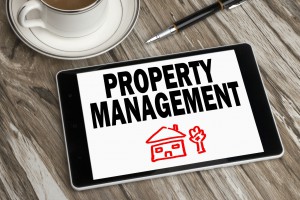While many Australians get into real estate investment to gain cash flow, in reality that’s not how property works.
You see…residential real estate is a high growth, but relatively low yield investment, so if you’re hoping to pay your child’s school fees or your vacation airfares from your rental returns, you’ll be sorely disappointed. 
Of course once you build up a big enough asset base of investment properties you can then lower your loan to value ratios so you’ll be able to live off the cash flow of your properties, but things must be done in the right order…
Asset growth first, then cash flow.
Having said that…
Cash Flow is important
Along your investment journey, it’s cash flow that will keep you in the game, until you have a big enough asset base to get out of the rat race.
This means as a property investor, it’s vitally important to understand and maximise your net cash flow position, and while most people just think of the rent coming in, here are six other areas to consider when assessing your investment cash flow.
1. Tax deductions for rental properties
As a property investor, you can claim a variety of expenses relating to your rental property as tax deductions, improving our after tax cash flow.
Your accountant should be able to outline these for you, or you can check out the list at the ATO website.
2. Depreciation
As a building gets older, the items within it wear out and therefore depreciate in value.
The ATO allows property investors to claim deductions (at varying rates) relating to the building as well as the plant and equipment within it in one of two ways:
- Capital works deductions are available on the structure, including items that are not easily removed, but remember this isn’t based on the purchase price of your p but on the construction cost of the building.
- Depreciation of plant and equipment, that are deemed to have an
effective life set by the ATO.
To claim depreciation against your property income, it’s advisable to obtain a tax depreciation schedule from a licensed quantity surveyor.
But the good news is that even the cost of obtaining this report is tax deductible.
3. Interest rates on borrowings
One of your biggest cash flow expenses as a property investor will be the interest you pay on your mortgage.
While rates are currently at historic lows, it’s pretty clear that sometime in the future interest rates will rise.
Strategic investors will prepare for this by locking in some or all of their loans to fixed interest rates, while others will set aside a financial buffer in an offset account, or similar, to handle unexpected expenses or the extra cost of rising rates.
4. Acquisition or purchase costs 
When budgeting for your property purchase you will need to allow for all the settlement costs of purchasing your property – not just the price of your property.
These should include things like stamp duty, legal costs, loan costs, valuation fees, repairs or improvements, insurance and the initial vacancy period and agent’s letting fees.
If you’ve underestimated your needs these extra borrowings will impact your planned cash flow and could require further input from your personal finances.
5. Vacancies
Investors must understand that their property will not be occupied hundred percent of the time.
Currently vacancy rates are falling and rentals are rising, but when estimating your cash flow it’s important to assume that your property will be vacant for a week or two each year.
And when your property does become vacant, apart from the period when you don’t receive rent you will also have to pay your property manager for reletting the property.
6. Property manager 
Another slight dent in your cash flow will be expense of professional property management.
In my mind this is a small price to pay for peace of mind of protecting your asset.
While the fees will vary from manager to manager, don’t choose your property manager based on the cheapest rate, because in general you get what you pay for.
Instead, do some research, check on testimonials and don’t skimp on quality service in exchange for saving a few dollars.
The skinny on cash flow
As you can see there are a number of areas that can improve or reduce your cash flow from one year to the next.
The key is to calculate for each of them so you’re not left in an unsavoury cash flow position that could have long-term impacts on your wealth creation journey.
GET THE RIGHT ADVICE…
If you’d like to know more – why not have a strategic discussion with me about your individual needs and let Ken Raiss formulate a Strategic Wealth Plan for you, your family or your business.
Just click here and find out more about Metropole Wealth Advisory’s range of services and book a time for your strategic consultation.
Just click here and leave your details and we’ll be in contact to explain more.
We offer you guidance and support that contribute to seamlessly combining the essential financial areas of your life.
Whether you are a business owner, a professional or a high-income earner we provide you with an individually tailored solution integrating the core disciplines of taxation, superannuation and property investment interwoven with finance, asset protection, succession and estate planning, personal risk insurances and philanthropy.
Please click here to organise a time for a chat. Or call us on 1300 20 30 30.
Disclaimer
This article is general information only and is intended as educational material. Metropole Wealth Advisory nor its associated or related entitles, directors, officers or employees intend this material to be advice either actual or implied. You should not act on any of the above without first seeking specific advice taking into account your circumstances and objectives.


No comments:
Post a Comment